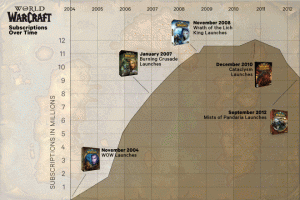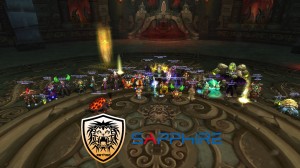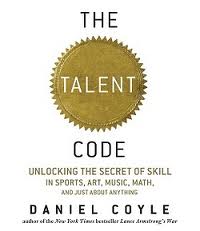Feedback — Final Self-Reflection
The following are our course learning objectives:
- Summarize, analyze, question, and evaluate written and visual texts
- Argue and support a position
- Recognize audience and disciplinary expectations
- Identify and use the stages of the writing process
- Identify characteristics of effective sentence and paragraph-level prose
- Apply proper citation practices
- Discuss how to transfer and apply your writing knowledge to other writing occasions
Imagine that you have compiled a portfolio of all your work from this course (Drafts and Final Versions of Projects 1-4, Feedback to and from Colleagues, Forum Comments, and Reflective Quizzes) and you are preparing to share it with others. These potential readers might be administrators at a school you are applying to, current or potential employers, friends, or other acquaintances. Your task is to write a cover letter that introduces your work and makes an argument about your understanding and achievement of the course learning objectives.
In the space provided here, discuss what you have learned in this course and choose 2-4 of our course learning objectives, describing each objective and referring specifically to particular passages from your coursework that demonstrate your progress towards and/or struggles with that objective. Indicate why you have chosen those objectives as the most important for you. Cut and paste specific portions of your coursework, and use them as evidence for your argument. In this way, by having an introduction, argument, evidence, and conclusion, your “portfolio cover letter” will both discuss and demonstrate how effectively you have achieved the goals of the course. When referring to your work, indicate clearly the piece of writing (i.e., Project 3) and page number(s) for your readers’ ease of reference.
Length: ~500-750 words
Dear Sir / Madam
reflecting on the course work and the objectives of the course “English Composition I: Achieving Expertise” I was truly surprised to discover my strengths as well as my weaknesses concerning various aspects of writing within 12 weeks time alone. I also immersed myself in the field of video games as an expertise referencing point, making this a pleasurable writing and researching journey.
Concerning the academic writing aspect – coming from Europe – I was accustomed to the APA citation format; However, I came to find that MLA referencing is much more suitable for the humanities field and to be honest it is now my personal favourite when it comes to submitting a paper in academia. I was also intrigued by some new kinds of formatting, for instance, when writing a critical review (the book reviewed goes at the beginning of the essay, something I wasn’t aware of.) Example [Final Project 1, page 1]:
Review: Coyle, Daniel (2009). The Sweet Spot. The Talent Code. Greatness Isn’t Born. It’s Grown. Here’s How. New York: Bantam (Extract from Chapter I)
Greatness and its shortcomings…
…Along with the brief descriptions of his endeavor that took him on what his daughter compares to an alternative “treasure hunt” [12], readers of his work actually come to realize that perhaps the term “talent”[11] is highly overrated; perhaps it does exist in terms of a being prone to a grandeur in certain fields – mainly athletic – but it should be more properly substituted by the term “deep practice” [16]…
Regarding the stages of the writing process I have learned to value the ongoing collaborative annotated bibliography listings in the forums, pertaining to various fields of expertise. Answering the initial post of a fellow Courserian who created the thread “games”, I personally contributed four titles on the video game genre. Sample contribution:
-
Bainbridge, William Sims. The Warcraft Civilization: Social Science in a Virtual World. London: MIT Press. 2010. Print.
…Bainbridge’s review of the game derives – as the title so hints – from a social perspective, but what he means by that is highly contestable. Sociology is one thing, attempting an explanation of the WoW social universe is a complete other. The book is divided into small chapters, each focusing on separate elements of the game such as religion or cooperation. The introductory roleplaying story lines are intuitive and strongly supported by lore details. After each one, an explicatory section ensues, where things are theoretically approached. The author often gives the impression of an outsider rather than an actual WoW gamer, since his lack of understanding how the game community actually works in non – lorewise manner is baffling….
Finally it should be noted that after 4 drafts, 4 final projects, peer assessment, and ongoing forum discussions at the platform as well as the Facebook group I was able to further understand how to properly summarize, analyze, question, and evaluate written and visual texts. Especially the latter received great praise from my peers [project 2, pages 1- 2]
…An illuminated sword stands out in front of him, filled with ominous skull details; seven runes etched across the blade form a death curse, still not deciphered to this day. As all epic swords usually do, this one has even got a name: Frostmourne. [4] Shades of gray intervene with silvery notes as one is immersed in a daunting feeling almost like the dark values within the image; how many lives has that sword taken? For an outsider the horror continues as he notices plenty other skull ornaments in the main character’s armor. A dragon encapsulated in ice soon gains our attention in the bottom right, only to serve as another threat. In the background a barely perceptible black tower amidst the fog beckons (spatial illusion); alas, we are in Icecrown [5] – the land of the cursed undead…
Project 3, the case study, required transferring and applying one’s writing knowledge to other writing occasions and it involved quite a bit of research. Project 4, the Op Ed, called for a somewhat journalistic style, reminding course participants how important it is to recognize audience and disciplinary expectations as well as establishing your own voice.
…So, fellow gamers, what’s left for us upon this wretched planet of corporate conglomerate decisions and Kardashian saga overdose? Well, if you like first / third person shooters and MMO RPGs you most likely skimmed through this text with a sardonic smile. You see there has been a gamer crowd out there who is not the least bit interested in consoles: the PC gamers… [ Project 4, page 1]
To sum up, these were 12 weeks of personal growth as a writer and as a reader, I might add. Still there is plenty more to be done, as the writing process is ongoing.
Yours faithfully
Zeibeki Rozalia






